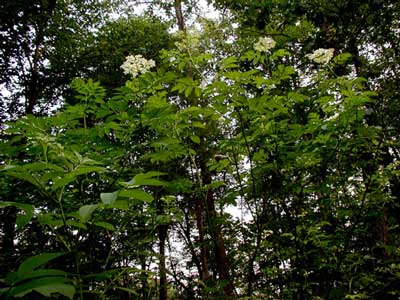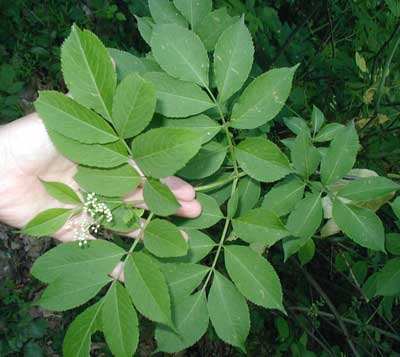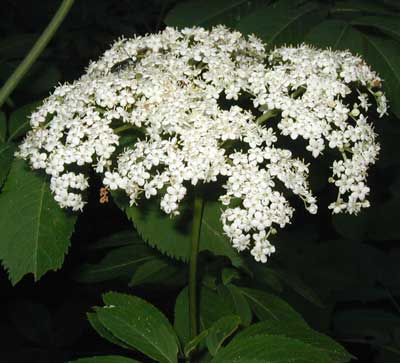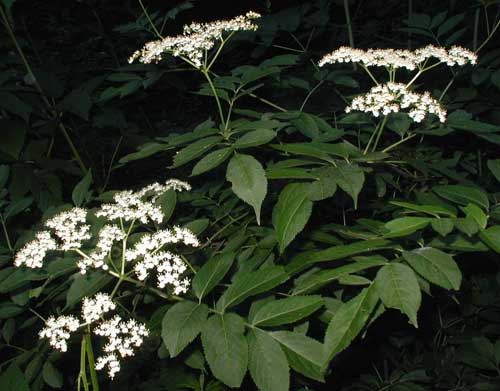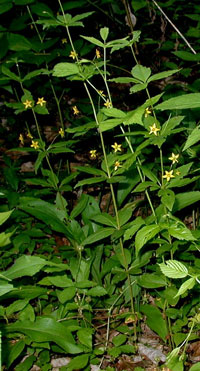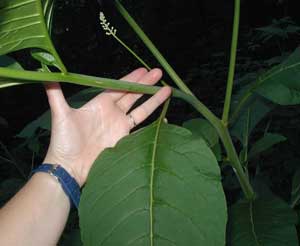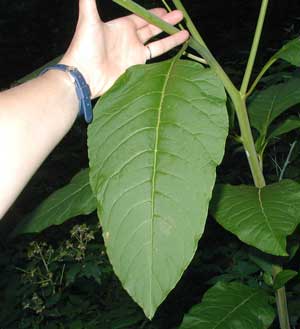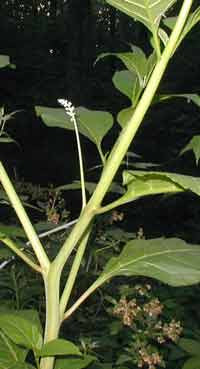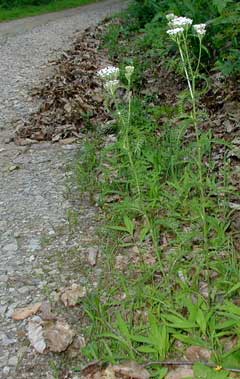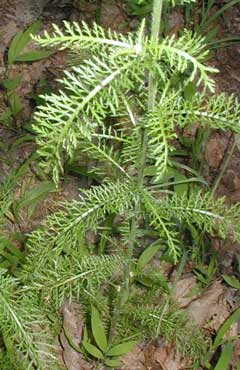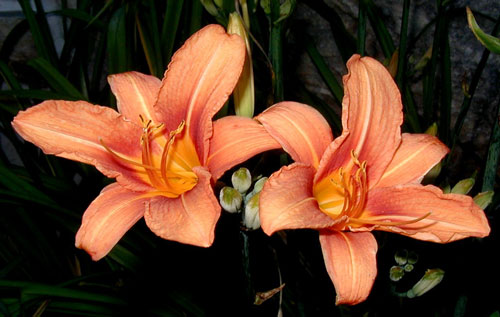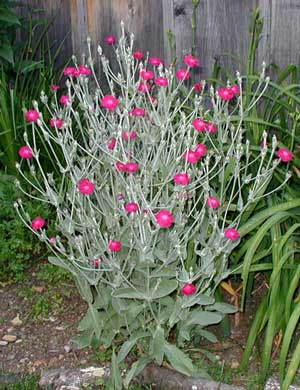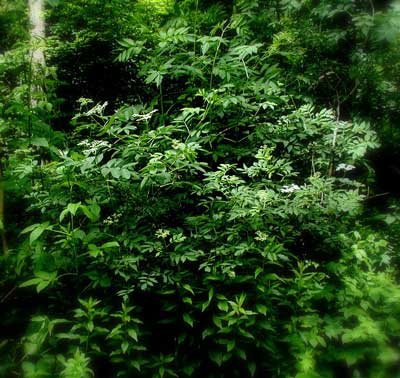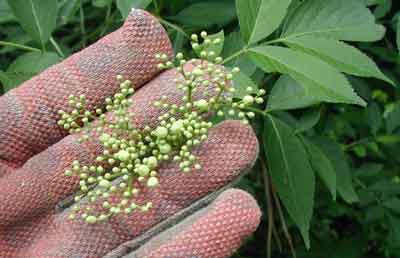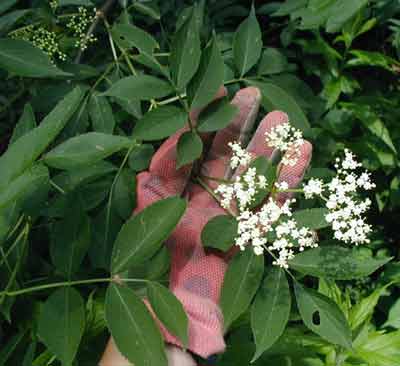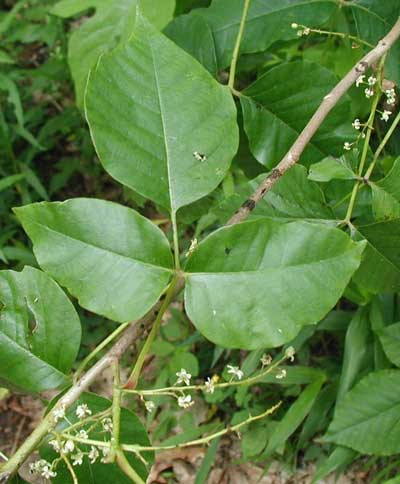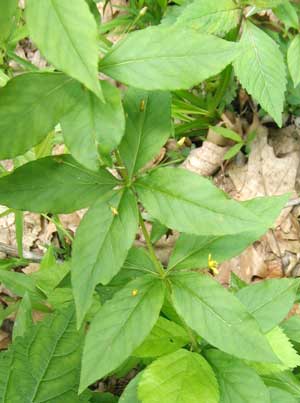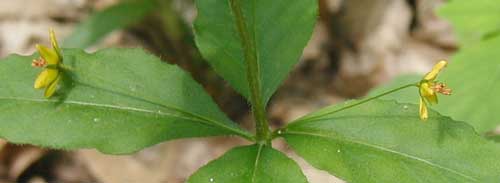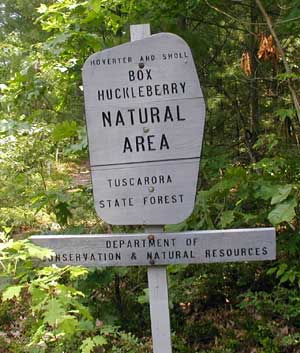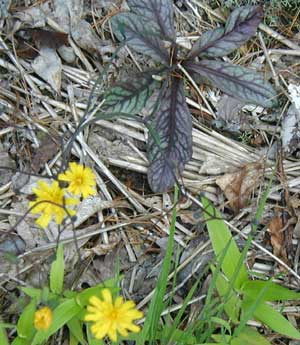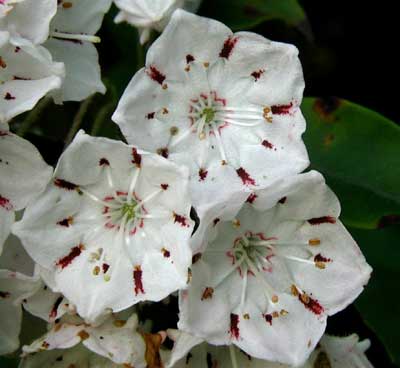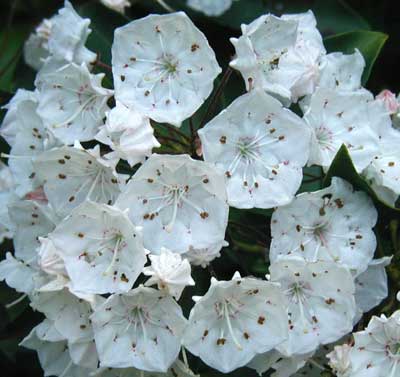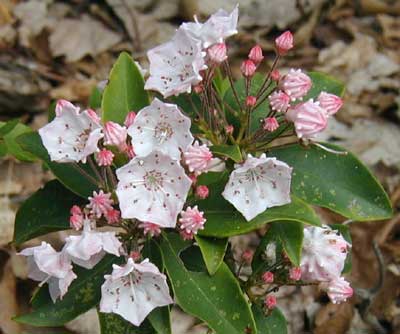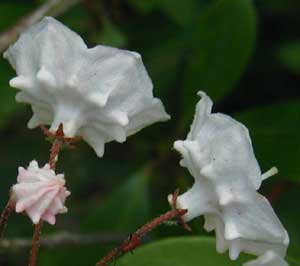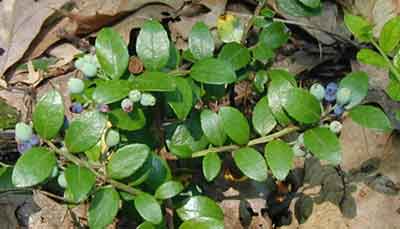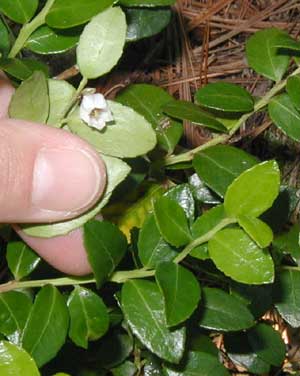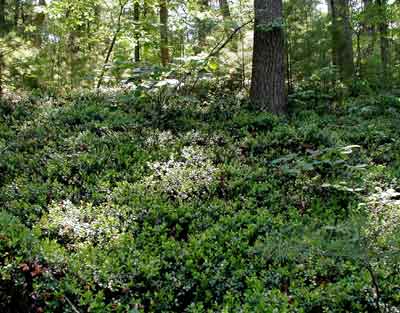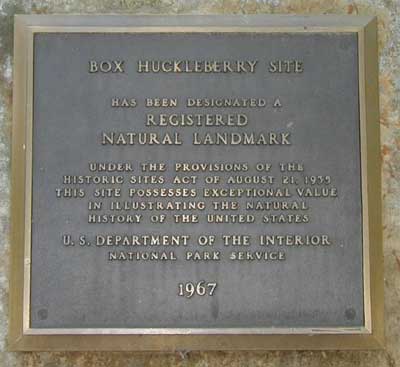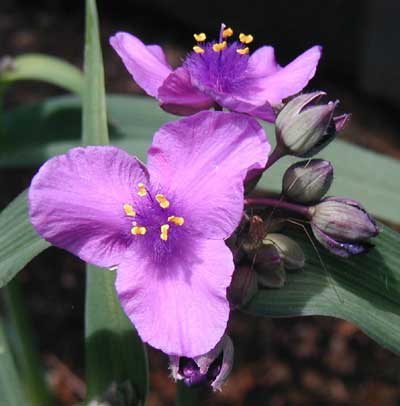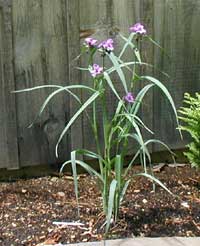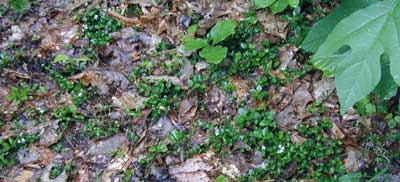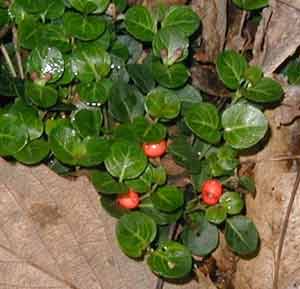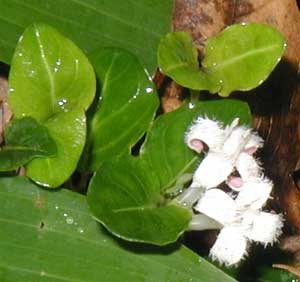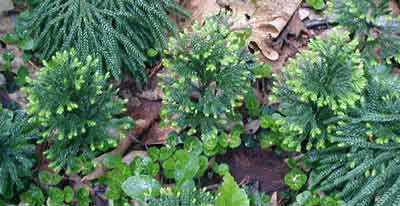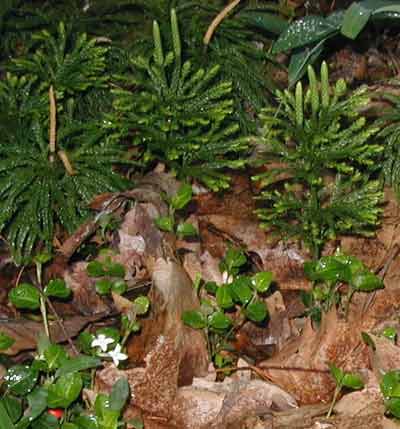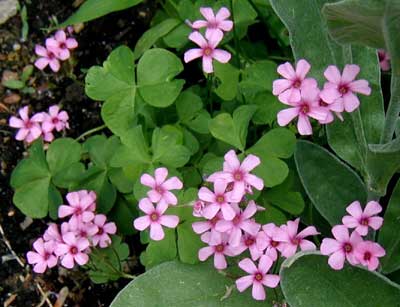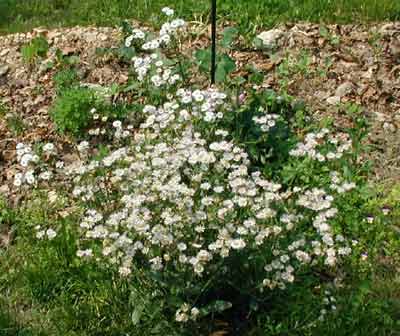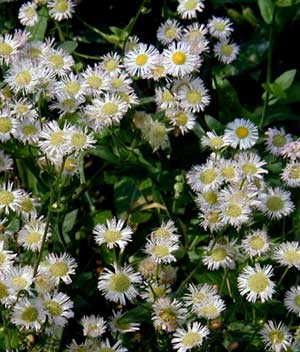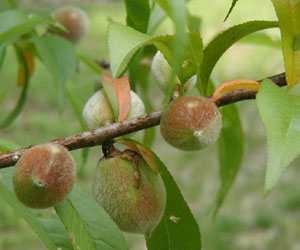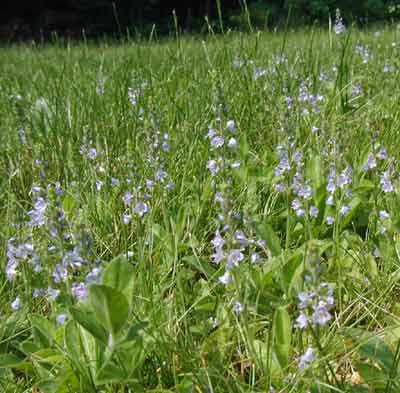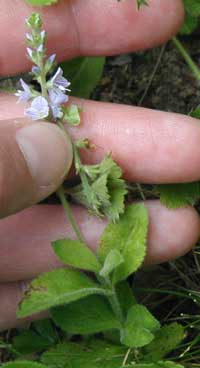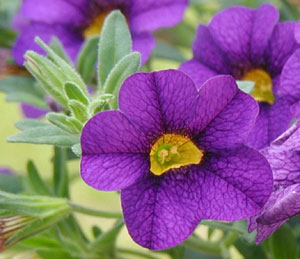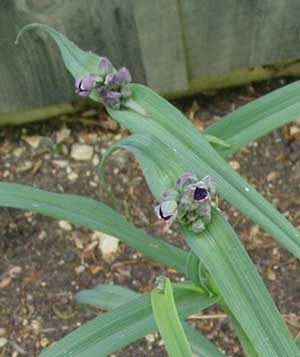A purple cone flower, Echinacea sp., growing adjacent to the front door had a bad habit last year of drooping onto the doorstep. To keep the four feet tall stems from falling over into our entryway, we simply placed a small tomato cage (31″ tall) over the perennial cone flower as it started to come back to life in the early Spring. As the stems grew we tucked them inside the cage and yes, it did look strange for a couple weeks. Now it looks great! You can’t even see the cage and the stems are all held upright for the butterflies and bees and us to appreciate — and not trip over!
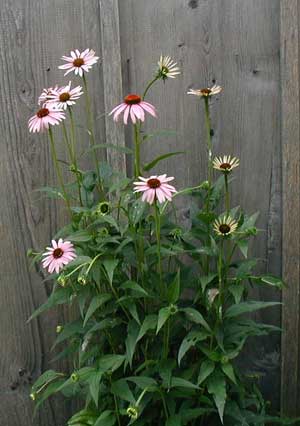
Echinacea blooming near the front door.
It’s fun to watch the blossoms develop. Here is the purple cone flower blooming as it starts out with greenish petals and as the outermost flowers bloom first followed by the inner flowers. As a member of the composite family, each blossom is actually made up of many very small flowers grouped together. Notice the yellow pollen emitted from each individual flower in bloom. The cone or composite of flowers starts out flat and attains the cone shape as it matures.
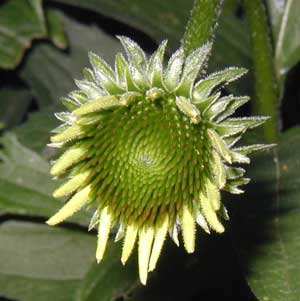
Early purple cone flower.
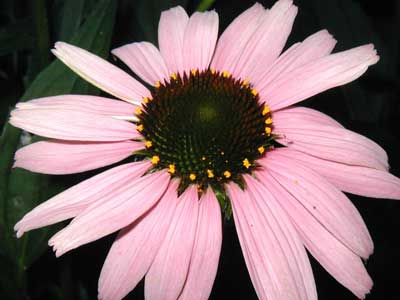
Outer-most flowers blooming as noted by the yellow pollen.
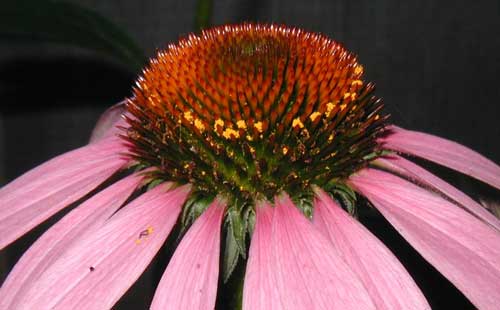
Inner cone flowers blooming.
Lavender is in bloom along the walkway near the front of the house. This plant will have to be divided and planted elsewhere as it has grown too big for its present location. The garden hose keeps tripping over it!
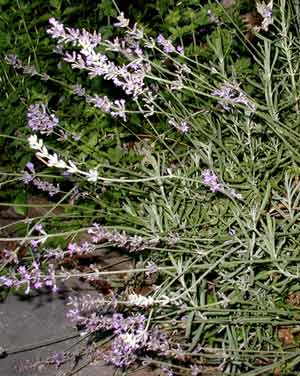
Lavender blooming next to the oregano.
A unique flower has started to blossom in the flower beds — the spider-flower. Not the spider plant that you might have in a hanging basket on your deck or indoors, but rather an escaped alien plant, Cleome spinosa. Granted, we got a couple plants from friends to put in our garden and I think it will be here for a long time. The seeds are plentiful and the spider-flowers return year after year. Blossoms are white to pink to purple and consist of four narrow-stalked petals that are separated widely and several extremely long stamens.

Spider-flowers blooming pink above the palmate leaves.
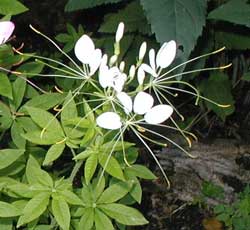
White spider-flowers with really long stamens.
Other garden flowers that are making an appearance include several cacti, the trumpet vines and portulaca, or the moss rose.
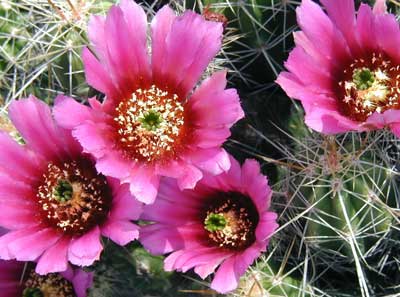
Purple cactus flower blooming in the sunshine.
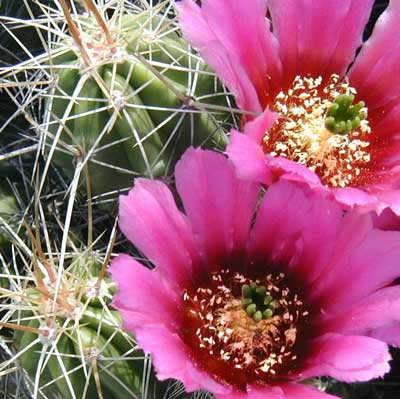
Spiny cactus leaves contrast with the delicate purple flower.
It is curious how such a mean-looking plant can produce such a delicate-looking flower!
